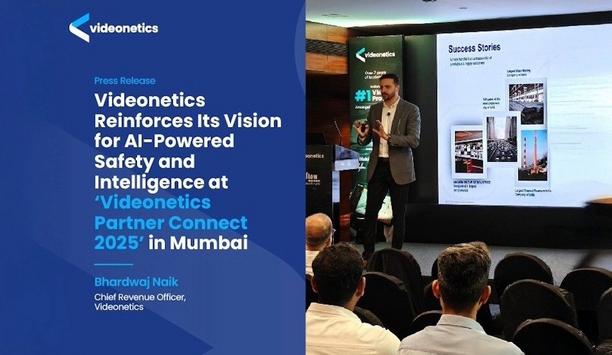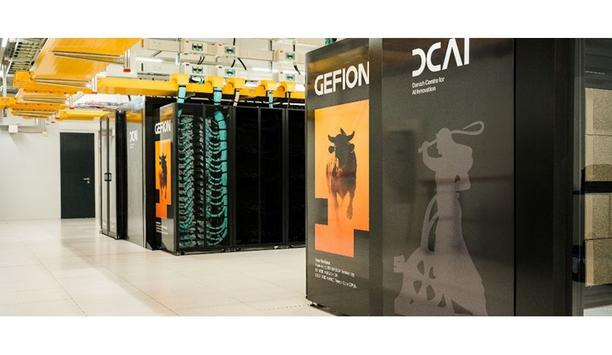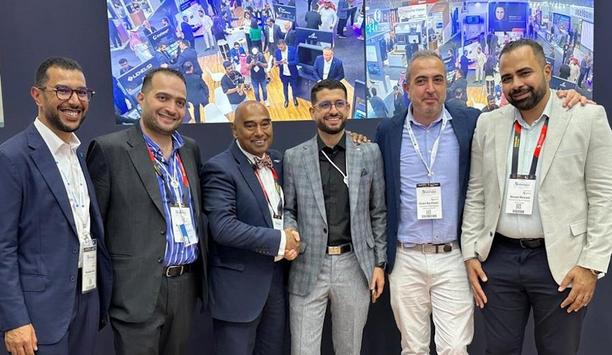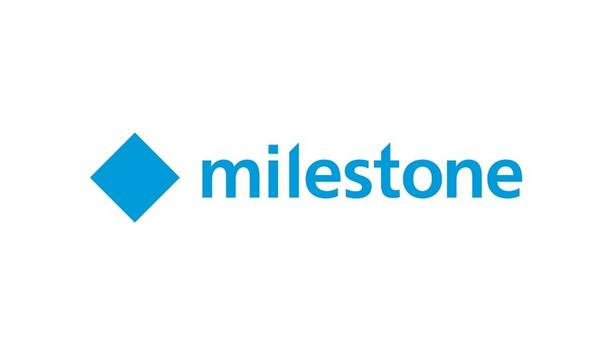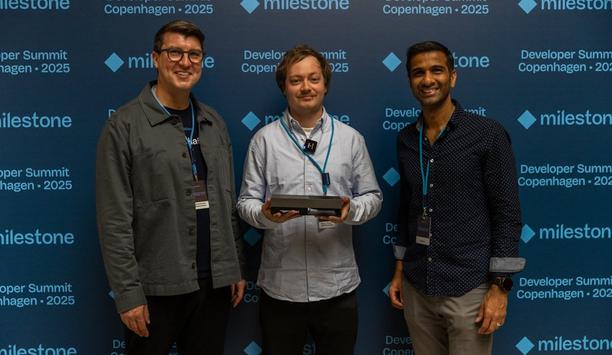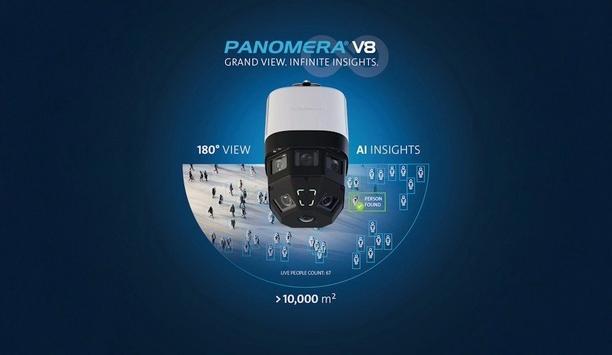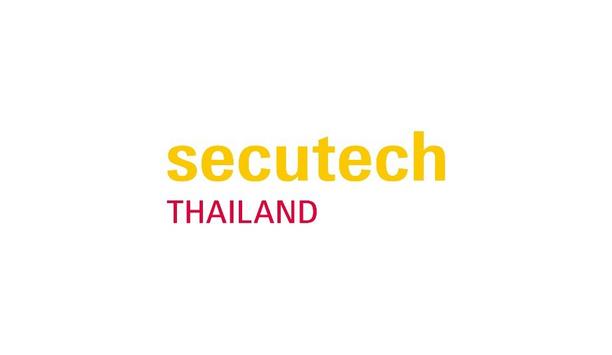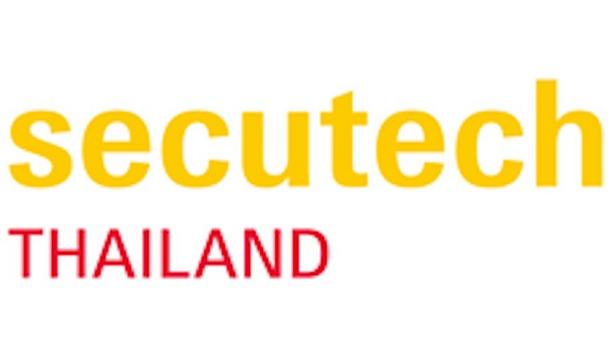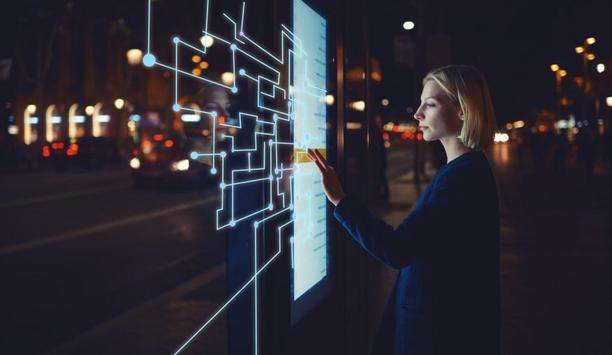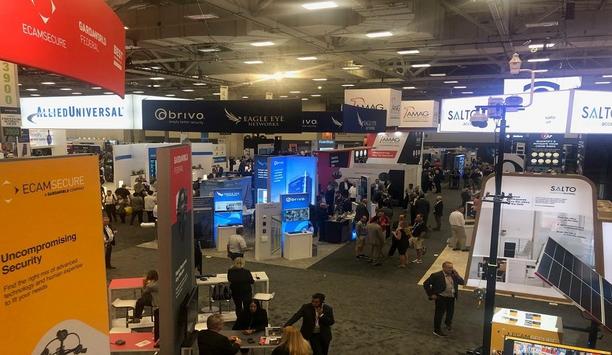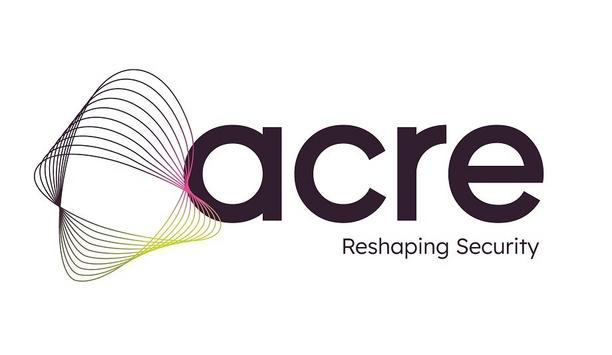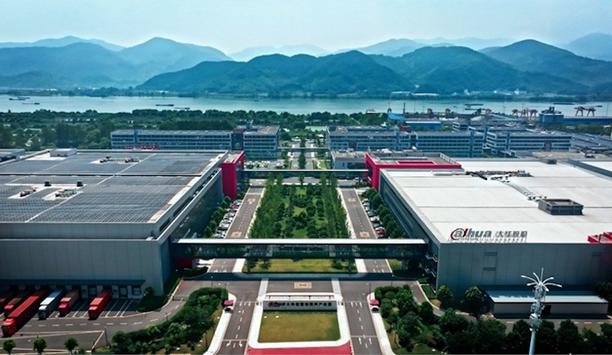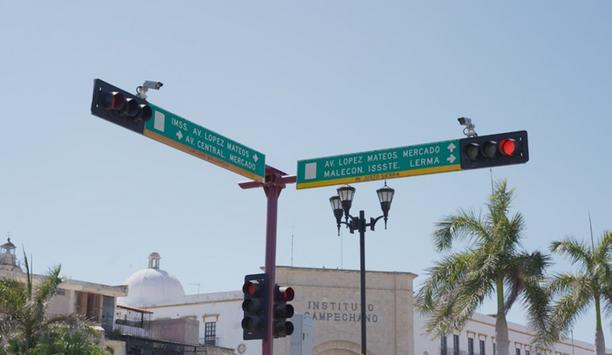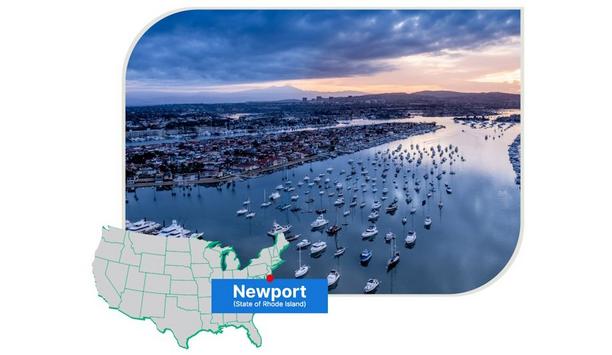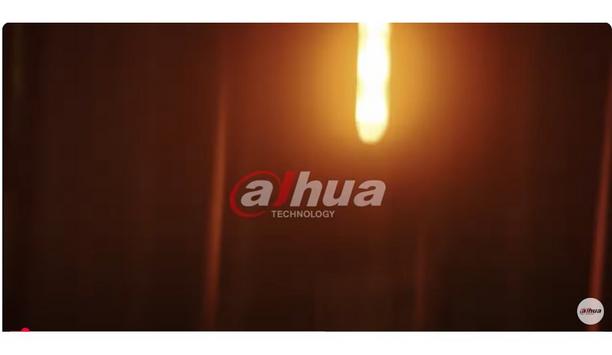Smart Cities
Videonetics, the pioneer in True AI-powered video analytics and unified video computing platforms, reaffirmed its commitment to shaping the future of intelligent video technologies at Videonetics Partner Connect 2025, held on December 5 in Mumbai. The gathering brought together partners, system integrators, and customers across the government and enterprise landscape, serving as a strategic platform for deepening collaboration and accelerating the adoption of AI-driven video intelligence a...
Secutech Thailand 2025, held at the Queen Sirikit National Convention Center (QSNCC), successfully fostered collaboration between security and fire safety innovators and Thailand’s smart city stakeholders. The show, which ran from 5 – 7 November alongside Fire & Safety Thailand, the Thailand Smart City Expo, and EdTEX, featured over 400 exhibitors from 10 countries and regions including Australia, China, India, Korea, Malaysia, the Netherlands, Singapore, Taiwan, Thailand, and t...
Milestone Systems will use the GEFION supercomputer to accelerate the development of sovereign, responsible, and high-performance AI within Europe. The work will focus on the deployment and fine-tuning of the world’s most advanced AI Vision Language Model (VLM) for traffic and smart city applications, developed by Milestone in collaboration with NVIDIA. Today, millions of video cameras capture valuable footage that could improve everyday life. Yet much of this potential remains untap...
Secure Logiq has completed the hardware supply for a significant surveillance and AI infrastructure project in Saudi Arabia, working closely with recent distribution partner Valuable Diamond. The deployment includes multiple petabytes of enterprise storage and high-performance AI servers that will support advanced video analytics and intelligent surveillance for one of the Kingdom’s most prestigious end users. In a region where demand for reliable surveillance infrastructure continu...
The Milestone Developer Summit 2025, dedicated to innovators, developers, and technology partners in video technology, took place at the historic Carlsberg Museum in Copenhagen—a venue renowned for scientific breakthroughs, including the invention of the pH enzyme, a milestone in biochemical innovation. This legacy of discovery provided the perfect global stage for a new era of open platform development, responsible AI, and, not least, the Hackathon. Fast evolution Sebastian Döllne...
The Milestone Developer Summit 2025, dedicated to innovators, developers, and technology partners in video technology, took place at the historic Carlsberg Museum in Copenhagen—a venue renowned for scientific breakthroughs, including the invention of the pH enzyme, a milestone in biochemical innovation. This legacy of discovery provided the perfect global stage for a new era of open platform development, responsible AI, and, not least, the Hackathon. Essence of Milestone’s open pla...
News
With the new Panomera® V8, Dallmeier presents a revolutionary camera that combines state-of-the-art multifocal sensor technology and artificial intelligence in one system – for a seamless 180° view without blind spots and the most precise analytics, even over large areas. Security redefined: 180° without compromise With eight lenses, eight sensors, and eight AI chips, the Panomera® V8 achieves a 180-degree field of view and enables coverage of a very large area with just one camera. Through a complex process, the eight systems are integrated into one comprehensive overview image, and the neural networks are logically linked. This significantly increases the efficiency, precision, and reliability of both human operators and AI assistance systems. This allows a wide variety of areas, from marketplaces to logistics areas to airport aprons, to be captured and evaluated. Infinite insights: The perfect platform for business intelligence applications A unique benefit of Panomera® V8 is its seamless 180° field of view with no blind spots and the ability to logically link the neural networks of the eight integrated AI chips. This eliminates the biggest weakness of many video analysis systems: incomplete, patchy, or duplicate image data. This special characteristic provides the ideal basis for comprehensive analytics options using both Dallmeier’s own AI analytics apps and solutions from technology partners. Complete capture of a scene allows for in-depth evaluations – whether for incident analytics, movement pattern analytics, or tracking complex processes. This makes Panomera® V8 ideal for a wide range of security and business intelligence applications. AI for real added value The combination of continuous images, high detail depth, and close integration of intelligent analytics functions opens up a wide range of possibilities for users. For instance, people and objects can be located in seconds based on external characteristics, such as clothing or bags. Flows of people or vehicles can be accurately recorded, and large areas can be reliably secured against unauthorized intrusion – all with significantly fewer false alarms. The in-depth analytics options not only offer added security, but also help optimize operational processes in the long term, whether for controlling queues, effective crowd management, or improving parking lot management. AI made in Germany Like all Dallmeier products, the Panomera® V8 is “Made in Germany” and meets the highest standards of quality, reliability, and cybersecurity. The same applies to artificial intelligence: Dallmeier relies on self-trained trained networks and retains full control over the training data. This approach increases precision and reliability and creates a clear basis for trust in technology. More than surveillance: From security to efficiency Whether in smart cities, airports, stadiums, logistics centers, or retail stores, Panomera® V8 enables operators to combine security and cost-effectiveness. Precise analyses allow for improved processes, targeted use of resources, and reduced costs. “With Panomera® V8, the camera becomes an important source of data,” explains Christian Linthaler, Chief Sales Officer at Dallmeier. “Our customers benefit not only from maximum security, but also from valuable insights into their processes – a double added value that goes far beyond classic CCTV.” Cost efficiency through less infrastructure As with all Panomera® models, the V8 series offers a significant economic advantage: it covers large areas, so fewer cameras, masts, and cables are needed than with conventional systems. This reduces the total cost of ownership (TCO) and increases ease of use. Industries and applications Smart cities – urban security & traffic flow analytics Airports – passenger management, perimeter protection & parking optimization Stadiums & events – real-time crowd management & security Logistics centers & ports – area monitoring & process optimization Industry & critical infrastructure – protection of sensitive areas & occupational safety
AOPEN is proud to introduce the DE5150, a powerful and compact industrial PC designed to bring AI-driven intelligence to the edge. Built for environments where performance, security, and reliability are essential, the DE5150 is ready to power the next generation of smart retail, logistics, and industrial automation solutions. At the heart of the DE5150 is the latest 15th Gen Intel Core Ultra (Arrow Lake-U/H) processor, combining strong computing performance with energy efficiency. With up to 96GB DDR5 memory, an integrated NPU delivering up to 92 TOPS, and Intel Arc 130/140T graphics, the DE5150 is built to handle demanding AI and multimedia workloads right where the data is created, at the edge. Its fan-cooled design and AT Power Mode with auto power-on (no RTC battery needed) make it perfectly suited for continuous, 24/7 operation in environments that can’t afford downtime. Designed for a variety of use cases From factory floors to digital storefronts, the DE5150 adapts to a wide range of use cases: Smart Retail & Digital Signage: Retailers can create dynamic and data-driven customer experiences with smooth dual 4K content playback. The DE5150 supports AI-powered analytics, allowing stores to understand customer behavior and adapt in real time. Smart Cities: Built for public installations such as information kiosks, transportation systems, and surveillance networks, the DE5150 processes data locally for instant insights, reducing latency, bandwidth use, and cloud dependency. Industrial Automation: With multiple COM ports (RS232/422/485) and dual LAN, the DE5150 integrates easily with PLCs and industrial sensors. It supports reliable operation between -20°C and 50°C, ensuring steady performance even in harsh or dusty conditions. Smart Logistics & Warehousing: AI acceleration enables parcel recognition, route optimization, and real-time monitoring. Dual network connections and multiple I/O options simplify communication between scanners, conveyors, and warehouse systems. Self-Service Kiosks: Compact, quiet, and secure, the DE5150 is ideal for self-service environments such as ticketing machines, vending systems, or airport check-in kiosks, continuously operating even after power loss thanks to its auto power-on mode. Key Features Intel Core Ultra Arrow Lake-U/H (TDP 15/28W) Integrated NPU for AI acceleration (up to 92 TOPS) DDR5 memory, up to 96GB Intel Arc 130/140T GPU Dual HDMI 2.1 display outputs Rich I/O ports, including multiple COM and dual LAN AT Power Mode with auto power-on (no RTC battery required) Hardware-level security with TPM 2.0 Fan-cooled, compact design for 24/7 operation AI acceleration, flexible connectivity, and rugged reliability With its AI acceleration, flexible connectivity, and rugged reliability, the AOPEN DE5150 delivers everything organizations need to process data smarter and faster at the edge. Whether it’s improving efficiency, enhancing customer engagement, or automating complex operations, the DE5150 provides a secure foundation for connected, intelligent environments.
Videonetics, a pioneer in AI-powered video computing, has once again been recognized by OMDIA (Informa TechTarget 2025) as India’s only #1 Video Management System (VMS) provider, and ranked among the Top 10 in APAC (excl. China) in Video Management and Video Analytics. This recognition, sustained for over seven consecutive years, underscores Videonetics’ unwavering pioneership, innovation, and excellence in delivering intelligent, secure, and scalable video solutions. “Being recognized by OMDIA for seven consecutive years is a proud validation of our vision — Made in India, Built for the world,” said Naresh B. Wadhwa, Vice-Chairman & MD, Videonetics. “Our focus on AI-driven innovation and trusted interoperability continues to empower governments, enterprises, and cities to build safer and smarter societies.” Rapid expansion Building on its dominance in India, Videonetics is rapidly expanding across Southeast Asia and the Middle East, emerging as one of Asia’s fastest-growing video computing companies. Its solutions empower smart cities, airports, transportation networks, and critical infrastructure, redefining how organizations monitor, analyze, and act on video intelligence in real time. Driven by a strong R&D foundation & its patented technologies in AI, computer vision, and deep learning, Videonetics continues to push the boundaries of innovation through its flagship Video Management System (VMS) and Video Analytics (VA) platforms — designed for interoperability, scalability, and high performance in complex environments. Trust, collaboration, and purpose “Our journey reflects more than market success — it’s about trust, collaboration, and purpose,” said Bhardwaj Naik, Chief Revenue Officer, Videonetics. “We remain committed to working with authorities and enterprises worldwide to enhance safety, security, and operational efficiency through the power of True AI.” With Thousands of cameras connected across smart cities, highways, enterprises, and industrial plants, Videonetics’ solutions adhere to the highest global standards of cybersecurity, interoperability, and data integrity. The company is certified under ISO 9001:2015, ISO 27001:2013, STQC, and is ONVIF-compliant (Profiles S, G, T, and M) ensuring reliability and trust at every layer.
Secutech Thailand 2025 opened at the Queen Sirikit National Convention Center (QSNCC), placing the spotlight firmly on smart security and fire safety technologies. The show will take place alongside Fire & Safety Thailand, Thailand Smart City Expo, and EdTEX, featuring over 400 exhibitors from more than 10 countries and regions. This global cross-section offers visitors the opportunity to explore the latest industry-wide innovations across the 11,600 sqm fairground. A comprehensive fringe program includes seminars where industry experts will share valuable insights on cutting-edge smart technologies, fostering both collaboration and education. Supported by robust government and public sector backing, the show acts as a key nexus for advancing Thailand’s smart city vision. Future of security and fire safety Ms Regina Tsai, General Manager of Messe Frankfurt (HK) Ltd – Taiwan Branch, offered insights into the show’s smart product focus: “We recognize that the future of the security and fire safety industries lies in smarter, more integrated solutions." "Secutech Thailand has brought together the most innovative exhibitors, pioneering industry experts, and key government and public sector partners to create a dynamic hub where knowledge, technology, and collaboration intersect to shape the future of both industries.” Smart city transformation A new strategic partnership with N.C.C. Management and Development, organizers of the co-located Thailand Smart City Expo, significantly broadens visitors’ access to cross-sector business opportunities and reinforces Secutech Thailand’s position as the country’s pioneering platform for security and fire safety innovation. Ms Tsai explained: “Our partnership with N.C.C. Management and Development elevates the show’s strategic value by enabling deeper integration and unlocking substantial cross-sector business opportunities for both visitors and exhibitors.” This collaboration, especially when considered alongside the concurrent Fire & Safety Thailand and co-located EdTEX, will help accelerate Thailand’s smart city transformation while broadening the scope of opportunities for visitors. Latest smart security and fire safety applications To facilitate simpler sourcing, Secutech Thailand will feature five specialized solution categories that showcase the latest smart security and fire safety applications: Surveillance & Access Control, which includes AI cameras, biometric access, and visitor management platforms to enhance security and efficiency. Fire & Safety Systems, presenting detectors, alarms, and suppression technologies to protect lives and assets. Disaster Prevention & Critical Communication, offering seismic monitoring, gas detection, PA/evacuation systems, and anti-drone solutions crucial for urban resilience. Smart Technologies & Mobility, highlighting 5G, IoT, building automation, robotics, EV charging, and intelligent traffic management. Integrated Safety & Security Systems, demonstrating the integration of video analytics, cloud computing, and big data for comprehensive urban management. Fringe Program Seminar Highlights Complementing these solution categories is an extensive fringe program where industry experts will share key insights on the smart technologies shaping the future of security, fire safety, and smart cities. Designed to encourage knowledge exchange, insightful seminars will equip attendees with the tools and understanding needed to navigate and stay ahead of emerging trends in the rapidly evolving industry landscape. Highlights include: AI Disruption and the Future of Smart Factories: Opportunities, Challenges, and Adaptation for Smart Cities: Mr Thammarat Arsasuwan, a lecturer at Siam Technology College, will reveal how AI is transforming smart factories and the implications for smart city development. Digital Futures of Urban Living: Shaping Smart Cities with IoT and AI: Dr Suthat Krongchon of the Thai IoT Association will explain how IoT and AI technologies are driving the evolution of future urban living and smart city planning. Safe and Smart Use of Drones in Security and Smart City Applications: Mr Kasitbhat Intuyos, from the Civil Aviation Authority of Thailand (CAAT), will talk about the best practices and safety considerations for drone use in security and smart city contexts. Development of the Thai AI platform model Other seminar topics will cover innovation in disaster prevention and mitigation, sustainable CCTV solutions, cybersecurity for smart infrastructure, and the development of the Thai AI platform model for smart city applications – highlighting the technologies and strategies driving the future of urban resilience, security, and sustainable development. This year’s show benefits from strong support by key government and public organizations driving the nation’s adoption of smarter security and fire safety technologies. This wide-ranging cross-sector backing highlights the event’s extensive industry representation and demonstrates its role in preparing visitors to capitalize on major government and industry initiatives like Thailand 4.0 and the Eastern Economic Corridor (EEC). Some of the key supporting organizations participating at Secutech 2025 include: Association of Municipalities and Cities Bangkok Fire and Rescue Department Drone Association of Thailand Fire and Rescue Association National Cyber Security Agency National Municipal League of Thailand Thai Chamber of Commerce Thai Generator Association Thai IoT Association Thai Intelligent CCTV Association Thai Mechanical and Electrical Consulting Engineer Association Thai Security Association The Building Inspectors Association The Civil Aviation Authority of Thailand Thailand Convention Exhibition Bureau Thailand Information Security Association Thailand Productivity Institute Fire safety products There will be much for visitors to explore on the show floor, with highlights including pioneering security exhibitors such as HIP Global Co Ltd, Motorola Solutions, Vive Co Ltd, and many more, while featured fire safety products range from Dahua & Wisualarm’s smart fire detection systems to Sanlien Technology Corp’s expert structural and vibration monitoring solutions. The fair’s business matching program facilitates strategic connections between exhibitors and key industry stakeholders. Buyers from the Thai government, local hospitals, hotels, law enforcement agencies, industrial sectors, and provincial fire stations are actively invited to participate. With over 115 sessions already scheduled, the program seeks to maximize opportunities for exhibitors and buyers to forge successful partnerships within a rapidly evolving market increasingly focused on smarter, integrated solutions.
Milestone Systems, a world pioneer in data-driven video technology, announced a forthcoming generative AI-powered video analytics plug-in for its XProtect video management software, developed in collaboration with NVIDIA. Designed to help operators contextualize alarms and focus on what truly matters, the new tool automates video review, filters out false alarms, and based on initial findings could reduce up to 30% of operator alarm fatigue. A beta version will debut at Smart City Expo World Congress in Barcelona, November 4-6, with general availability coming later this year. Key capabilities Today’s video systems capture vast amounts of data, yet reviewing footage remains time consuming and largely manual. Milestone Systems’ new XProtect plug-in addresses this challenge by leveraging generative AI to automatically summarize, contextualize, and validate video content in real time, helping teams respond faster, manage video more efficiently, and effectively reduce operator alarm fatigue. Key capabilities include: Automated Incident Reports – Selected video clips are instantly converted into incident summaries and structured reports, helping operators reduce time spent on documentation. Event Validation – The plug-in can be configured to analyze motion events and validate alarms, reducing false positives and improving alert handling. This feature is fully integrated with the XProtect rule engine. Contextual Bookmark Summaries – Bookmarked footage is automatically summarized using natural-language output, allowing fast triage without reviewing each clip manually. The plug-in integrates directly with the XProtect rule engine and is deployable on-premises or in the cloud to support compliance and deployment flexibility. Built on Ethical AI This new solution is built on Milestone’s Hafnia Vision Language Model (VLM) trained on 75,000 hours of ethically sourced, real-world video data from either Europe or the US, using NVIDIA Cosmos Curator for data preparation and running either on cloud infrastructure or regional data centers powered by NVIDIA. It leverages the NVIDIA Cosmos Reason VLM, making it one of the most advanced and compliant video AI platforms in the industry. Making advanced video intelligence accessible Thomas Jensen, CEO of Milestone Systems, said: “With this new XProtect plug-in, we are making advanced video intelligence accessible to cities, organizations, and operators everywhere who manage traffic systems – helping them unlock new levels of efficiency, safety, and insight.” “XProtect users will get access to state-of-the-art generative AI capabilities, and our partners will be able to build value on top of those new capabilities now available within XProtect. It truly marks a pivotal step in our mission to transform how the world manages and learns from visual data, responsibly and at scale.” XProtect customers like the cities of Genoa, Italy, and Dubuque, Iowa, are excited to try these new capabilities, leading the way in adopting advanced video intelligence solutions to enhance traffic management. Ecosystem innovation The plug-in is just the beginning. Milestone is also introducing a VLM as a Service via APIs, allowing developers, integrators, and partners to build their own generative AI solutions regardless of the video management platform in use. Live demonstrations of the XProtect plug-in will be held in partnership with Vaidio at Smart City Expo World Congress on November 4-6 in Barcelona, in the Dell booth, showcasing a new AI model benchmarking tool and real-time incident summarization. Continuing the momentum Milestone will continue the momentum at the Developer Summit in Copenhagen, Nov. 10–11, where Hafnia’s capabilities and the winners of the Hafnia Hackathon will be revealed.
With safe, secure smart city initiatives central to Thailand’s economic ambitions, Secutech Thailand – the country’s pioneering platform for security and fire safety technologies – will return from 5 – 7 November 2025 at the Queen Sirikit National Convention Center (QSNCC). At a press conference held at the same venue, fair organizers, government officials, industry pioneers, and suppliers and service providers came together to discuss the products and solutions that will play a major role in guiding the nation’s vision for safe, connected, and smart urban living. Functionality of smarter urban systems During the press conference, representatives from the Bangkok Fire and Rescue Department, Digital Economy Promotion Agency (depa), and the Thai IoT Association, alongside pioneering brands such as HIP, Hitachi, and TOA Electronics (Thailand) Co., Ltd., reinforced their support for the show by highlighting how security and fire safety are inseparably paired with Thailand’s smart city ambitions. They further emphasized how safety enables the functionality of smarter urban systems, reinforcing the fair’s role as a catalyst for innovation and improved quality of life. Ms Regina Tsai, General Manager of Messe Frankfurt (HK) Ltd – Taiwan Branch, elaborated: “Our vision is simple: you cannot build a truly smart city without first building a safe city. Secutech Thailand 2025 will showcase critical security and fire safety solutions that ensure future cities are both intelligent and protected.” New collaboration with N.C.C. Backed by key public and private partners, Secutech Thailand 2025 will leverage the rapid growth of the nation’s smart city sector, which continues to receive strong support from the Thai government as part of its Thailand 4.0 and Eastern Economic Corridor (EEC) initiatives. The industry’s continued development is directly reflected in increased interest surrounding the upcoming fair, which is set to host over 400 exhibitors from 10 countries and regions including Australia, China, India, Korea, Malaysia, the Netherlands, Singapore, Taiwan, Thailand, and the UAE, alongside an anticipated 14,000 visitors – with both figures more than double last year’s totals. This year marks an exciting new collaboration with N.C.C. Management and Development, who not only manage the 11,600 sqm fairground, but also organize the co-located Thailand Smart City Expo. The synergy between both shows promises to enhance the visitor and exhibitor experience, delivering a business environment that brings the key players of both industries under one roof. New business possibilities “Our new partnership with N.C.C. and the rapidly growing scale of the exhibition reflects the tremendous momentum and interest in safe smart city development across the region,” continued Ms Tsai. “Secutech Thailand not only spotlights critical technologies but also offers immense business potential for exhibitors and buyers looking to pave the way to the future of Thailand’s expanding smart city market. This collaboration with the Thailand Smart City Expo amplifies opportunities for stakeholders to explore integrated solutions and accelerate the country’s smart urban transformation.” In addition, the concurrent Fire & Safety Thailand and co-located EdTEX, allow for even deeper cross-sector synergies, opening up new business possibilities across all major industry verticals and strengthening international cooperation in urban safety and innovation. Five key solution categories With the industry’s future in mind, Secutech Thailand 2025 has also pinpointed five key solution categories essential for smarter cities: Surveillance & Access Control: featuring AI and panoramic cameras, advanced video management systems, biometric access, smart locks, and visitor management platforms to enhance security and operational efficiency. Fire & Safety Systems: showcasing detectors, alarms, aspirating smoke detection, wireless panels, and suppression systems designed to protect lives and assets. Disaster Prevention & Critical Communication: including seismic warning and structural monitoring, gas detection, PA/evacuation systems, and anti-drone solutions vital for urban resilience. Smart Technologies & Mobility: presenting 5G and IoT solutions, building automation, smart home systems, robotics, EV charging infrastructure, and intelligent traffic management. Integrated Safety & Security Systems: demonstrating the convergence of video analytics, cloud computing, and big data for comprehensive urban management. Security exhibitor highlights Pioneering security exhibitors at this year’s fair will showcase a wide array of advanced technologies spanning the five categories designed to enhance the safety and efficiency of smart cities. Highlights include: HIP Global Co Ltd, offering cutting-edge AI CCTV cameras capable of tracking driver behavior and sleep detection, as well as smart biometric systems. The company also provides fire extinguishing drones, combining security monitoring with innovative safety responses. Innodep Inc specializes in intelligent video security management, integrating AI-powered analytics, big data, cloud computing, and IoT technologies. Solutions are tailored to support complex smart city environments with real-time data and seamless urban safety integration. Motorola Solutions provides comprehensive video surveillance and access control technologies designed to enable rapid response, helping to protect people and property by improving situational awareness and streamlining security operations. Synology Inc. produces highly optimized network-attached storage (NAS) devices that support efficient data management and IP surveillance. The company’s solutions help cities handle the increasing data demands of urban security infrastructures. Viva Co Ltd focuses on AI-powered facial recognition and license plate recognition (LPR) systems. These advanced technologies enhance identification, monitoring, and traffic management capabilities in smart urban settings. Fire safety exhibitor highlights In the fire safety sector, pioneering companies will also present innovative products across the five key categories that are crucial for safeguarding people and infrastructure in Thailand’s evolving smart cities. Highlights include: Dahua & Wisualarm, set to showcase smart fire detection systems that integrate intelligent video analytics, enhancing early warning capabilities and improving response accuracy in fire safety management. Lubi Industries LLP manufactures reliable and advanced industrial pumping solutions key to effective fire safety systems, ensuring consistent performance in emergency scenarios. NAFFCO showcases a comprehensive range of firefighting equipment and protection systems, from extinguishers to emergency response vehicles, supporting urban resilience and public safety. RKH Engineering & Service (Thailand) Co Ltd specializes in gas detection and flame detection technologies, alongside integrated safety solutions that prevent hazards and ensure safe industrial and urban environments. Sanlien Technology Corp delivers expert structural and vibration monitoring systems that help maintain infrastructure integrity and safety, critical for sustainable urban development. EV safety innovations Secutech Thailand 2025 will also offer a comprehensive fringe program featuring forums on AI disruption in smart factories, AI security and data centers, cybersecurity for smart cities, drone applications for the future of security, digital urban futures with IoT and AI, as well as electric vehicle (EV) safety innovations. These sessions will provide valuable insights into the challenges and opportunities shaping the future of urban environments.


Expert commentary
The Internet of Things is growing quickly. It has moved far beyond a few smart gadgets at home. Today, connected technology is in homes, factories, hospitals, farms, and cities. Experts expect the global market for IoT devices to rise from about $70 billion in 2024 to more than $181 billion by 2030. This means more devices, more data, and more opportunities for industries everywhere. This growth comes from several advances working together. 5G connections make it possible to send and receive data faster. Edge computing processes information close to where it is created, which helps with quick decisions. Analytics allow organizations to understand and act on the data they collect. Together, these improvements are opening the door to new ways of working, producing, and communicating. IoT: The next generation As devices become more advanced, they use more energy and send more data. Think about high-quality security cameras, detailed environmental sensors, or systems in vehicles that send constant updates. All of these devices require a strong supply of power and a steady connection. In 2024, sensors made up more than 32 percent of all IoT device sales. Sensors are essential, yet the next wave of devices will do even more. They will process information themselves, use artificial intelligence, and include many features in one unit. This progress depends on networks that deliver both the energy and the bandwidth to support them. Into the future Devices and applications keep improving, so networks need the flexibility to handle what comes next Setting up IoT systems is about more than meeting today’s needs. Devices and applications keep improving, so networks need the flexibility to handle what comes next. A future-ready design provides extra capacity in both power and data flow. This way, when it’s time to add new devices or upgrade existing ones, the system is prepared without requiring major changes. One smart approach is to use modular equipment. For example, a network switch might deliver more power than devices currently use, while allowing room to connect more advanced devices later. This helps keep the system ready for growth. Built for all IoT devices often operate in challenging places. Factories, power plants, rail lines, and shipping ports face extreme temperatures, dust, vibration, and other difficult conditions. Network equipment in these locations needs the strength to keep working through heat, cold, and constant use. Industrial-grade gear is designed for these environments. It can run in a wide range of temperatures, handle physical impacts, and resist interference. Features such as port security, which keep a connection safe if a cable is removed, help protect both the equipment and the data it carries. Systems with backup power inputs continue to run even when one power source goes offline. Plug into PoE Power over Ethernet (PoE) sends both energy and data through the same cable Power over Ethernet (PoE) sends both energy and data through the same cable. This makes installation simpler and allows flexibility in where devices are placed. And as devices become more capable, they often need more power to operate. The latest innovation for PoE can deliver up to 90 watts on each port. This is enough to support advanced devices like AI-enabled cameras or multi-sensor units. When every port on a switch can supply that much power at the same time, adding more devices is straightforward and performance stays strong. Protecting the network Every connected device is part of a larger network. Protecting this network means securing data from the moment it leaves the device until it reaches its planned destination. Built-in security features in network equipment — such as secure architecture, encryption support, and physical safeguards — help keep information safe. They also help meet industry and government requirements for equipment sourcing and design. A clear path Organizations leading in IoT think ahead. They prepare for the next stage of technology by building networks with flexibility, durability, and protection in mind. These networks supply extra power, allow more bandwidth, and keep data secure while adapting as the system grows. The focus is on creating a foundation that supports innovation year after year. This means planning for devices that are faster, more capable, and more connected, while making sure the infrastructure grows right along with them. Looking ahead Strong, adaptable, and secure networks will allow connected devices to reach their full potential The IoT of the future will touch nearly every part of daily life. It will help farmers grow food more efficiently, guide self-driving vehicles, improve medical care, and keep cities running smoothly. As devices multiply and gain new abilities, the networks powering them need to grow in step. Strong, adaptable, and secure networks will allow connected devices to reach their full potential. By planning for both today’s needs and tomorrow’s possibilities, organizations can make the most of the opportunities IoT brings—and keep those opportunities expanding for years to come. Key takeaways: Preparing for the future of IoT The IoT market is growing fast The global market for connected devices is expected to grow from $70 billion in 2024 to more than $181 billion by 2030. This means more devices in more industries, from farming to healthcare to transportation. Devices are using more power and data Newer devices have more features — such as high-quality video, built-in AI, and multiple sensors — and these require stronger power supplies and faster connections. Future-ready networks are essential Infrastructure should allow extra capacity for both power and data. This ensures new devices can be added without major changes or delays. Environments vary, so equipment should match the setting Industrial areas, outdoor spaces, and transportation hubs need rugged, reliable equipment that works in extreme conditions and stays secure. Security starts at the network level Built-in protections — like secure architecture, encryption, and physical safeguards — help keep information safe and meet important industry requirements.
The artificial intelligence revolution in physical security has arrived, transforming how we protect people, assets, and infrastructure. From smart buildings that automatically adjust access protocols based on real-time threat assessments to healthcare facilities using AI-enhanced video analytics for patient safety, these technologies are reshaping the industry landscape. But with this transformation comes a new era of regulatory oversight that security professionals must navigate carefully. Convergence of AI The convergence of powerful AI capabilities with traditional security systems has created unprecedented opportunities for enhanced protections while simultaneously raising important questions about privacy, transparency, and responsible deployment. As these technologies become more sophisticated, security professionals face the dual challenge of maximizing their potential while ensuring compliance with evolving regulatory frameworks. The current state of AI in security systems By combining multiple data streams, AI creates a more comprehensive and intelligent security ecosystem Today's AI-driven security solutions extend far beyond traditional security capabilities. Modern systems can understand complex human behaviors, analyze crowd patterns in transportation hubs, detect early signs of trouble in retail environments, and even predict potential security breaches before they occur. By combining multiple data streams — video feeds, access control systems, audio detection, and various sensors — AI creates a more comprehensive and intelligent security ecosystem. Industrial applications The impact is particularly evident in integrated security operations. In healthcare settings, AI systems can simultaneously monitor patient safety, manage access control, and detect unauthorized entries, all while maintaining strict privacy protocols. In education environments, these technologies help safeguard campuses by identifying unusual behavior patterns while respecting student privacy rights. Retail operations benefit from AI's ability to not only detect potential theft but also analyze customer flow patterns and identify operational inefficiencies. The technology's capabilities continue to expand through: Advanced anomaly detection that establishes normal activity patterns and flags deviations. Predictive analytics that forecast potential security risks before incidents occur. Natural language interfaces that allow security teams to query video data using voice or text commands. Multimodal analysis combining data from thermal cameras, LIDAR, IoT sensors, and other sources. Integration of multiple data sources Security systems are evolving into predictive platforms that can anticipate and prevent incidents These innovations represent just the beginning of AI's potential impact on security applications. As algorithms become more sophisticated and computing power increases, security systems are evolving into predictive platforms that can anticipate and prevent incidents rather than simply respond to them. The integration of multiple data sources allows for a more nuanced understanding of security situations, enabling more precise and effective responses to potential threats. Emerging regulatory frameworks The rapid advancement of AI capabilities has prompted governments worldwide to develop comprehensive regulatory frameworks. The European Union has taken the lead with its AI Act, categorizing AI systems based on their potential risks and establishing strict guidelines for high-risk applications. Focus on safe, secure AI The United States is following suit, with recent executive orders focusing on safe, secure, and trustworthy AI development. These initiatives reflect growing global awareness of the need to balance technological advancement with ethical considerations and human rights protection. These regulations are reshaping how security technology providers approach development and implementation. Responsibility-by-design approach Companies must consider the entire lifecycle of their AI solutions, from initial development The focus has shifted toward a "responsibility-by-design" approach, where privacy protection, data security, and ethical considerations are built into systems from the ground up. This includes robust testing protocols, responsible data practices, and continuous monitoring of AI systems post-deployment. Companies must consider the entire lifecycle of their AI solutions, from initial development through deployment and ongoing operation. Transparency, accountability For security professionals, this regulatory evolution means adapting to new requirements around transparency, accountability, and human oversight. Security teams must document how AI systems make decisions, implement safeguards against bias, and ensure human operators maintain final authority over critical security decisions. The regulations also emphasize the importance of data protection, requiring organizations to implement strict controls over how information is collected, stored, and used within AI-powered security systems. Address challenges of AI The regulatory landscape continues to evolve, with new frameworks emerging that specifically address the unique challenges of AI in security applications. These include requirements for regular system audits, mandatory impact assessments for high-risk deployments, and specific guidelines for handling sensitive personal data in security contexts. Organizations must also develop clear procedures for addressing potential AI system errors or biases, ensuring that corrective measures can be implemented quickly when needed. Preparing for the future The challenge lies in maximizing security effectiveness while maintaining transparency and public trust The security industry stands at a crucial junction where innovation meets responsibility. As AI capabilities grow more sophisticated, security professionals must balance the use of these powerful tools while adhering to evolving regulatory requirements. This balance becomes particularly critical in smart city applications, where AI systems might monitor public spaces for safety while respecting individual privacy rights. The challenge lies in maximizing security effectiveness while maintaining transparency and public trust. Proactive approach Success in this new landscape requires a proactive approach. Security teams should invest in understanding both the technical capabilities and regulatory implications of their AI systems. This includes developing clear protocols for data handling, establishing robust testing procedures, and implementing continuous monitoring systems that can detect and address potential issues before they become problems. Organizations must also create comprehensive training programs to ensure security personnel understand both the capabilities and limitations of AI-powered systems. Human-in-the-loop approach The human element remains crucial. While AI can process vast amounts of data and identify patterns beyond human capability, security professionals must maintain oversight and final decision-making authority. This "human-in-the-loop" approach ensures that AI serves as a powerful tool for augmenting human judgment rather than replacing it. Training and education become increasingly important as security teams must understand not only how to operate AI-enhanced systems but also how to interpret their outputs and make informed decisions based on AI-generated insights. An ever-evolving environment The integration of emerging technologies like large language models and computer vision will create new opportunities Looking ahead, the security industry will likely see continued evolution in both AI capabilities and regulatory requirements. Future systems may incorporate more advanced predictive capabilities, enhanced natural language processing, and improved ability to understand complex human behaviors. However, these advancements will need to develop within an increasingly structured regulatory framework that prioritizes privacy, transparency, and ethical use. The integration of emerging technologies like large language models and computer vision will create new opportunities while also introducing novel regulatory challenges. Physical security transformation The transformation of physical security through AI represents both an opportunity and a responsibility. By embracing responsible innovation practices while maintaining strong ethical standards, security professionals can help shape a future where advanced AI capabilities and regulatory compliance work together to create safer, more secure environments for everyone. Need for security guidelines The key to success lies in viewing regulatory requirements not as obstacles but as guidelines for developing more trustworthy and effective security solutions. As the industry continues to evolve, organizations that prioritize both innovation and compliance will be best positioned to leverage AI's full potential while maintaining public trust and regulatory compliance.
As urban populations grow and security challenges evolve, major Californian cities like Los Angeles, San Francisco and San Diego have increasingly turned to advanced surveillance systems to enhance public safety. Surveillance infrastructure Between 2022 and 2024, these cities have made significant strides in upgrading their surveillance infrastructure, driven by concerns over crime, public safety, and the need for more sophisticated emergency response systems. This article explores how California's urban areas are improving surveillance technologies and practices, with a focus on citywide initiatives, partnerships with technology firms, and the integration of AI-driven systems. Introduction of smart city surveillance The push toward smart city technology has reshaped the security landscape in California The push toward smart city technology has reshaped the security landscape in California. With the state being home to some of the world's most innovative technology firms, cities such as Los Angeles (LA), San Francisco, and San Diego are leveraging this expertise to develop and implement advanced surveillance systems. Citywide surveillance initiatives Since 2022, the state has seen an increase in citywide surveillance initiatives aimed at addressing rising crime rates, enhancing traffic management, and improving emergency response. These systems include AI-enhanced video analytics, high-definition cameras, and real-time monitoring centers, helping law enforcement track and respond to incidents more efficiently. Key surveillance developments across Californian cities 1. Los Angeles: AI and Facial Recognition Integration Los Angeles has led the way in deploying state-of-the-art surveillance systems, particularly in high-crime areas and transportation hubs. In 2023, the Los Angeles Police Department (LAPD) expanded its use of artificial intelligence (AI) in crime prevention. The department integrated AI-enhanced video analytics with its existing network of over 30,000 surveillance cameras throughout the city, a move designed to improve real-time crime detection and automate the identification of suspicious activity. Privacy law compliance The city government has enacted measures to restrict the application of facial recognition to high-priority cases Facial recognition technology has also been a controversial but increasingly used tool in the city’s surveillance strategy. While privacy concerns remain, LA has implemented strict regulations to ensure that this technology is used in compliance with privacy laws. In response to public concerns, the city government has enacted measures to restrict the application of facial recognition to high-priority cases such as locating missing persons or identifying known offenders. According to a 2023 Los Angeles Times report, these technologies have helped reduce violent crime in areas where the systems are deployed, with a notable 15% reduction in crime rates in Downtown LA. 2. San Francisco: Data-Driven Crime Prevention San Francisco, a tech hub, has similarly embraced advanced surveillance systems, with a focus on predictive policing. The city's law enforcement agencies have adopted data-driven approaches that rely on vast amounts of data collected through surveillance cameras and other sensors placed around the city. Pilot programme In 2022, the San Francisco Police Department (SFPD) introduced a pilot program that integrated predictive analytics with its citywide surveillance system. By analyzing patterns of criminal activity, the system can forecast potential hotspots and allocate resources more effectively. Although controversial due to concerns over profiling and civil liberties, the system has been credited with helping police prevent several large-scale crimes. Transparency in the use of surveillance data Measures include annual audits and public reporting, ensuring that the system adheres to standards Moreover, the city has implemented stringent oversight measures to ensure transparency in the use of surveillance data. This includes annual audits and public reporting, ensuring that the system adheres to legal and ethical standards. A 2023 report from The San Francisco Chronicle indicated that this initiative has led to a 10% improvement in response times to major incidents, particularly in high-density areas like the Financial District. 3. San Diego: Smart Traffic and Public Safety Surveillance San Diego has also taken significant steps to upgrade its urban surveillance capabilities. One of the key focuses of the city has been integrating surveillance systems into its transportation infrastructure. The city’s Smart Streetlights program, which began as a traffic monitoring initiative, was expanded in 2022 to include surveillance capabilities aimed at improving public safety. Smart Streetlights programme Under this program, thousands of streetlights equipped with cameras and sensors have been installed throughout San Diego. These lights not only monitor traffic conditions but also detect suspicious activities, accidents, and emergencies. The data collected is transmitted in real-time to the city’s public safety command center, where law enforcement can respond to incidents more quickly. A 2023 evaluation by the San Diego Union-Tribune revealed that the Smart Streetlights program had helped reduce traffic-related accidents by 12% and had become a vital tool in aiding crime investigations. Cybersecurity measures All data collected through its surveillance network is secure from potential breaches or unauthorized access Additionally, San Diego has focused on enhancing its cybersecurity measures to protect the integrity of its surveillance data. The city government partnered with local cybersecurity firms to ensure that all data collected through its surveillance network is secure from potential breaches or unauthorized access. Key technologies driving city surveillance in California The success of these surveillance initiatives can be attributed to the rapid advancement of several key technologies, which have transformed traditional security systems into sophisticated, AI-driven solutions. 1. AI-Powered Video Analytics AI-powered video analytics is at the forefront of city surveillance efforts in California. This technology enables the automatic detection of unusual patterns or activities, significantly enhancing the ability of law enforcement agencies to identify potential threats in real time. AI systems can analyze vast amounts of video footage quickly, reducing the need for manual monitoring. 2. Facial Recognition Technology Despite its controversial nature, facial recognition technology has been adopted in several Californian cities for high-priority security applications. While cities like San Francisco have restricted its use, other cities such as Los Angeles have integrated it into their surveillance networks under strict legal frameworks. 3. Predictive Analytics This technology allows police departments to focus their resources more effectively by identifying potential hotspots Predictive analytics, used prominently in San Francisco, relies on data collected from various surveillance systems to predict potential criminal activity. This technology allows police departments to focus their resources more effectively by identifying potential hotspots based on past crime patterns. 4. Smart Sensors and IoT Integration Cities like San Diego have embraced the Internet of Things (IoT) by embedding smart sensors into urban infrastructure. These sensors, connected to central monitoring systems, help cities track everything from traffic conditions to air quality. They also play a crucial role in public safety by identifying anomalies and triggering alerts for law enforcement. Challenges and controversies While the benefits of enhanced surveillance are clear, Californian cities face several challenges in the implementation of these technologies. 1. Privacy Concerns The increased use of surveillance technologies, particularly AI and facial recognition, has raised significant privacy concerns. Advocacy groups have called for stricter regulations to prevent misuse and protect individual privacy rights. In response, cities like San Francisco and Los Angeles have implemented oversight committees and enacted laws to govern the use of these technologies. 2. Data Security The risk of cyberattacks targeting sensitive data has prompted cities to invest in robust cybersecurity As cities collect vast amounts of surveillance data, ensuring its security is a major challenge. The risk of cyberattacks targeting sensitive data has prompted cities to invest in robust cybersecurity measures. San Diego's partnership with local tech firms to secure its surveillance infrastructure is an example of proactive steps being taken to address this issue. 3. Balancing Surveillance and Civil Liberties Striking a balance between effective surveillance and the protection of civil liberties continues to be a contentious issue. Critics argue that predictive policing and AI-driven surveillance systems can lead to biased decision-making and discriminatory practices. California cities have responded by introducing transparency measures, including public audits and open-data initiatives, to maintain public trust. California Urban Surveillance: A Model Worth Emulating The last couple of years have seen Californian cities making significant progress in upgrading their surveillance and security systems. By integrating AI, predictive analytics, and IoT technologies into their urban infrastructures, cities like Los Angeles, San Francisco, and San Diego are setting new standards for public safety and crime prevention. However, as these technologies continue to evolve, cities must also address the ethical and legal challenges they present, particularly in the areas of privacy and data security. With careful planning and regulation, California’s approach to urban surveillance could serve as a model for other cities worldwide.
Security beat
Multiple technology trends are transforming the physical access control market. There is a fundamental shift away from physical cards and keys toward digital identities — mobile credentials, digital wallets, biometrics, and cloud-native access platforms. These next generation access solutions are radically reshaping how buildings operate, protect staff, and perform functionally. At the same time, AI and analytics solutions are being layered onto these physical access control systems to support predictive threat detection and behavioral insights. Access data itself is becoming an asset for sustainability, space optimization, and smart building initiatives. Risk, impact operations and experience The annual HID Global Security and Identity Trends Report highlights these and other issues The annual HID Global Security and Identity Trends Report highlights these and other issues. The survey cites improving user convenience as a priority for nearly half of organizations, while 41% are focused on simplifying administration, and 28% struggle with system integration. These are not theoretical challenges, they are day‑to‑day friction points that add cost, increase risk, impact operations and experience, and, of course, must be addressed. HID Global’s commercial focus HID Global’s commercial focus is to help organizations digitize their access control — with mobile identities, biometrics, and cloud platforms — and then to use the data to deliver more value. “We are turning access control from an operational cost into a software-driven asset that improves efficiency, supports Environmental, Social, and Governance (ESG) goals and even creates new revenue opportunities,” says Steven Commander, HID Global’s Head of Consultant Relations. The impact of digital transformation Digital transformation is the method of moving access control from hardware and physical credentials Digital transformation is in the process of moving access control from hardware and physical credentials to a software-driven, integrated experience. The transformation strengthens security while also improving user convenience — transforming the “pavement to the desk” journey. HID enables this shift through mobile credentials, biometrics, cloud-native platforms, and solutions that allow third-party applications to run on door hardware. “This helps customers turn access data into operational and commercial outcomes, while also improving the overall user experience,” says Commander. Digital transformation in access control is not focused on chasing the latest trends. Rather, transformation is about turning software, data and integration into outcomes that matter to customers, says HID. “Security becomes stronger and more adaptive,” says Commander. “Operations become simpler and more cost‑effective. Experiences become seamless and consistent. Sustainability moves from ambition to action. And the financial case becomes clearer as efficiencies are banked and new value streams emerge.” The challenge of futureproofing with long lifecycles Given that physical security technologies will be in place for 15 to 20 years, it is important to plan for how systems can evolve over time. Considering how rapidly security threats, compliance standards, and user expectations change, 15 to 20 years is a long time. The decisions made at the beginning of a system’s lifecycle can either limit flexibility later (which will be costly) or enable long-term adaptability. Support for open standards such as Open Supervised Device Protocol (OSDP) is therefore important Choosing products and platforms that are open, interoperable, and designed for updates can enable future-proof projects. Support for open standards such as Open Supervised Device Protocol (OSDP) is therefore important. In addition, systems built on open controller platforms — such as Mercury — enable organizations to switch software providers or expand functionality without replacing core door hardware. Architectural openness is key to system lifecycles and maximizing the return on investment (ROI) from a chosen solution. Digital credentials and mobile access Flexibility and upgradeability should also be top of mind when it comes to endpoints like access control readers. While RFID cards are still commonplace, there is a clear trend toward digital credentials and mobile access. Readers that support both allow organizations to transition at their own pace, without committing to a full system overhaul. A long system lifecycle does not mean technology should remain static. Security, particularly cybersecurity, demands more frequent updates. Technologies that support firmware upgrades in the field extend the value of a deployment while helping organizations keep pace with emerging threats. In that sense, lifecycle thinking is not just about longevity — it’s about maintaining resilience and readiness over time. Applying biometrics and mobile identities Biometrics is becoming mainstream as a credential alternative, strengthening security without adding friction Biometrics is becoming mainstream as a credential alternative, strengthening security without adding friction. Many organizations are now deploying biometrics to support fast, seamless access journeys, with adoption already around 39% in access control according to HID’s recent research. In addition, 80% of organizations surveyed expect to deploy mobile identities within the next five years. Full technology integration enables tap‑to‑access without opening an app; the user journey becomes faster, safer, and more convenient. “It is where the industry is headed and we are at the vanguard of this,” says Commander. Ongoing challenge of cybersecurity At HID Global, cybersecurity is embedded into everything, from corporate processes and development practices to the solutions they bring to market. “Our approach ensures that customers can strengthen their overall security posture, not only by deploying secure products but by benefitting from HID’s commitment to the highest industry standards,” says Commander. HID holds multiple globally recognized certifications, including ISO 27001, ISO 14298, SOC Type 2, and CSA STAR, which demonstrate their robust information security and cloud security practices. In addition, HID’s SEOS® secure chipset is independently SEAL-certified, providing one of the most advanced levels of protection available on the market today. “Ultimately, this means organizations are not just purchasing isolated secure products; they are implementing solutions developed and delivered within a comprehensive, cybersecure framework,” says Commander. “When deployed according to best practices, HID solutions enable customers to achieve the highest levels of resilience against evolving physical and cyber threats.” Developing green and sustainable solutions A huge amount of waste is generated from the manufacture of plastic RFID access cards Digital credentials align with the sustainable solutions that everyone wants. A huge amount of waste is generated from the manufacture of plastic RFID access cards. Over 550 million access cards are sold annually. This creates 2,700 tons of plastic waste and 11,400 tons of carbon, based on a PVC card weighing 5 grams. Therefore, digital credentials self-evidently reduce the reliance on plastic cards (helping reduce carbon emissions by up to 75% according to HID’s research), while leveraging access control system data supports energy optimization by shutting down or reducing systems in unused spaces. Energy use and CO₂ emissions can be cut dramatically, showing how access systems can contribute to sustainability goals and green building certification. What is the latest in smart buildings? Smart buildings increasingly rely on mobile access control as the backbone for digital services. Real-time access data enables new services such as automated room bookings, HVAC control, lift/elevator calling, e-bike hiring, and so on. Smart buildings increasingly rely on mobile access control as the backbone for digital services The financial upside is clear; smart, digitally transformed buildings can deliver around 8% higher yields per square foot versus traditional office space. Operational savings accrue from reduced administration, the removal of card production and shipping, and lighter IT support. This creates a value cycle — better experiences drive adoption, adoption fuels monetization, and monetization funds further improvements. Achieving technology impact in the real world One standout project is One Bangkok – a $3.9 billion mixed-use development in Thailand – which demonstrates the scale of what can be achieved when access control data is used for optimization, particularly when it comes to monitoring facilities usage and occupier behaviors. By switching lights off or lowering the temperature in unused rooms, for example, the One Bangkok building demonstrates this potential with a 22% reduction in energy consumption, saving 17,000 MWh and 9,000 tons of CO₂ annually. Sustainability is a key factor in contributing to how properties are valued. And sustainability extends far beyond digital credentials having a lower environmental impact than plastic cards. Buildings with recognized sustainability certifications often command rental premiums of around 6%, and three‑quarters of security decision‑makers now consider environmental impact in their procurement assessments.
Companies at GSX 2023 emphasized new ways that technologies such as artificial intelligence (AI) and the cloud can address long-standing issues in the security market. Among the exhibitors at the event in Dallas were companies seeking creative ways to apply technology, lower costs, and make the world a safer place. Reflecting on the exhibition, here are some additional takeaways. Expanding AI at the edge i-PRO is a company reflecting the continued expansion of edge AI capability in the security market. Today, more than half of the company’s lineup supports AI at the edge so the customer has a wide choice of form factors when seeking to leverage the feature set. AI processing relay, extended warranty i-PRO is increasing their warranty period from 5 to 7 years, which could be a lifetime warranty in some cases I-PRO also has an “AI processing relay” device that accepts non-AI video streams and applies edge analytics. AI has progressed from a high-end technology to a feature available in a variety of cameras at different price points. i-PRO is also increasing its warranty period from 5 to 7 years, which could be a lifetime warranty in some cases depending on a customer’s refresh schedule and lifecycle management. Active Guard, MonitorCast The company’s video management system (Video Insight) is continuing to build new features including “Active Guard,” an integrated metadata sorter. Their access control platform, MonitorCast, is a Mercury-based solution that is tightly integrated with Video Insight. Their embedded recorders now have PoE built in. “We can move at a faster pace to fill out our product line since leaving Panasonic,” says Adam Lowenstein, Director of Product Management. “We can focus our business on adapting to the market.” Emphasis on retail and other verticals Shoplifting is a timely issue, and retail is a vertical market that got a lot of attention at GSX 2023. “We see a lot of retailers who are primarily interested in protecting employee safety, but also assets,” says Brandon Davito, Verkada’s SVP of Product and Operations. “Shrinkage is a CEO-level priority.” “Retailers are getting more engaged with security posture, instead of letting perpetrators walk,” Davito adds. Intrusion detection Verkada has an intrusion product that will notify a central station if there is an alarm On the alarm side, Verkada has an intrusion product that will notify a central station if there is an alarm, and operators can review videos to confirm the alarm. Other capabilities seeking to discourage trespassers include sirens, strobes, and “talkdown” capabilities. International expansion Verkada continues to expand internationally with 16 offices in all, including Sydney, Tokyo, and London. The core value proposition is to enable customers to manage their onsite infrastructure more simply, including new elements such as PTZ cameras, intercoms, and visitor management. Verkada emphasizes ease of use, including a mobile application to allow access to be managed across the user base. Forging partnerships “We are committed to the channel and industry, and we continue to build relationships and expand our reach,” says Davito. Among the industry relationships is a new partnership with Convergint, which was hinted at during the show and announced later the same day. They are also expanding their partnerships with Schlage, Allegion, and ASSA ABLOY. Working with other verticals They offer new features for K -12 schools, and a new alarm platform is easier to deploy and manage Verkada has also found success across multiple other verticals, notably healthcare, where they integrate with an electronic medical records system. They offer new features for K-12 schools, and a new alarm platform is easier to deploy and manage. They are integrating wireless locks to secure interior doors in schools, looking to secure the perimeter, and installing guest management systems. Transitioning the Mid-Market to the Cloud Salient is squarely focused on the “mid-market,” a large swath of systems somewhere between small businesses and enterprise-level systems. Pure cloud systems are not as attractive to this market, which has a built-out infrastructure of on-premise systems. Adding a camera to an existing system is easier and less expensive than tying it to the cloud. Benefits of cloud It’s a market that may not be ready for pure cloud, but there are benefits to be realized from adding a cloud element to existing systems. “We are continuing to augment our premise-based solutions with added cloud capabilities and flexibility,” says Sanjay Challa, Salient’s Chief Product Officer. The feedback Salient hears from their customers is “I want to own my data.” The hybrid cloud approach offers the right mix of control, flexibility, and unit economics. Cloud add-on capabilities We want to provide the flexibility for customers to go full-cloud as it becomes more economically attractive" Cloud add-on capabilities include bringing more intelligence about system operation to the user via the cloud. Over time, Salient expects to sell more cloud-centric offerings based on feedback from integrators and customers. “We want to provide the flexibility for customers to go full-cloud as it becomes more economically attractive over time,” says Challa. Vaidio AI technology Salient seeks to be a transition pioneer to help customers realize the path to the cloud. Their approach is “crawl, walk, run,” and helping customers make the transition at each stage. Salient has added AI to its product offering, incorporating Vaidio AI technology from IronYun into a powerful suite and broad array of on-premise analytics, which are gaining traction. The seamless approach makes it easy for customers to embrace AI analytics, although Salient remains broadly committed to open systems. Addressing ‘Soft’ Features for Integrators AMAG is in the process of enhancing its product line with the next generation of access control panels. However, “product” is just part of the new developments at AMAG. In addition to “hard” features (such as products), the company is looking to improve its “soft” features, too; that is, how they work with the integrator channel. Integrator channel Rebuilding a process to make your organization more efficient, is relatively easy; it just takes a lot of persistence" “We have the depth of our legacy customer base we can learn from, we just need to close the feedback loop quicker,” says Kyle Gordon, AMAG’s Executive Vice President of Global Sales, Marketing, and commercial Excellence, who acknowledges the value of reinstating face-to-face meetings after COVID. “We are laser-focused on nurturing our integrator channel,” he says. “Developing new features takes time, but rebuilding a process to make your organization more efficient, that’s relatively easy; it just takes a lot of persistence,” says Gordon. More cohesive internal communication is another useful tool, he says. Disrupting the cloud based on price Wasabi is working to make cloud applications less expensive by offering a “disruptive” price on cloud storage, $6.99 per terabyte per month (80% less than hyperscalers). Contending “hyperscalers” like AWS are charging too much for cloud storage, Wasabi is using its own intellectual property and server equipment co-located in data centers around the world. Wasabi sells “hot cloud storage,” which refers to the fact that they only have one tier of storage and data is always accessible. In contrast, a company such as AWS might charge an “egress fee” for access to data stored in a “colder” tier. Cloud storage “We saw that several video surveillance companies had not yet adopted cloud storage, and we saw an opportunity to make it easy to use,” said Drew Schlussel, Wasabi’s Senior Director of Product Marketing. “We just install a little bit of software that allows them to store data in the cloud and bring it back from the cloud.” Performance, protection (cybersecurity), and price Wasabi works with integrators, resellers, and distributors and also integrates with VMS companies Wasabi works with integrators, resellers, and distributors and also integrates with VMS companies such as Genetec and Milestone. Emphasizing performance, protection (cybersecurity), and price, their data centers are certified to SOC 2 and ISO 27001 standards. Faster throughput for weapons detection Xtract One is a young company focusing on weapons detection in a time of accelerated concern about gun issues post-COVID. Founded in Canada and based on technology developed at McMaster University, Xtract One has found a niche in providing weapons detection at stadiums and arenas. These customers already have budgets, and it is easy to shift the money to a newer, faster technology. Madison Square Garden in New York City is among its customers. Cost savings solution Xtract One can increase throughput to 30 to 50 people per entrance per minute (compared to 5 to 6 people per minute when using metal detectors). The solution doesn’t require anyone to empty their pockets and the system alarms on items beyond guns and knives. Using Xtract One allows customers to reduce the number of screening lanes and security staff, providing additional cost savings, all while getting fans through the screening process in half the time. Purpose-built sensors The system uses purpose-built sensors looking for specific characteristics, such as reflective and density properties In addition to stadiums and arenas, Xtract One, formerly Patriot One, is also getting “inbound” interest from schools, hospitals, manufacturers, and other verticals that makeup 50% of their business. “We’re on a rocket ride, mainly because the weapons issues are not going away,” says Peter Evans, CEO and Director at Xtract One. The system uses purpose-built sensors looking for specific characteristics, such as reflective and density properties, all correlated by an AI engine. Providing early warning of violence ZeroEyes is another company focused on weapons detection. Their AI gun detection system works with video images to identify if someone is “brandishing” (carrying) a weapon. In other words, the system does not detect concealed weapons. Identifying someone carrying a weapon provides early warning of a possible violent act. Increased response with AI-enables images Images are identified by AI and sent to a monitoring center where a human confirms the image before contacting first responders. Knowing the location of a shooter enables staff to lock entry points, move people to safety, and direct first responders. The company was founded to leverage existing camera views to stop mass shootings and gun violence by reducing response times.
Acre is a company built on mergers and acquisitions (M&A). Since its founding in 2012, Acre acquired several familiar access control companies, from Vanderbilt to RS2 Technologies, Open Options to Feenics, and several others. Acre itself was acquired in 2021 by UK-based private equity firm Triton, thus launching a new chapter in the company's history. Don Joos was named the new CEO in 2022 and set about transforming Acre from a collection of acquired companies into a coherent whole (representing various brands). A year later, we recently caught up with Don Joos to discuss the "new Acre" and what's ahead. Q: How does your background inform your approach to leading Acre Security? In physical security, there is a shift to more of a software-centric versus hardware approach Joos: This is my fourth company as CEO. What I’ve found along the way is that no matter the size or type of business, there’s a common theme, the business is going through some form of evolution or transformation because the industry they're in is going through an evolution. And today, in physical security, there is a shift to more of a software-centric versus hardware approach, and there’s a shift occurring that’s pulling us to the cloud. I think a key thing here is that while the industry is evolving, we must keep a careful eye on the evolution of the customer because the customer is the one who will dictate the pace of change, and I think that is what a lot of people sometimes lose sight of. Q: It seems Acre is on the path from being a “collection of small companies” to “a collection of brands within a single company.” Joos: I think most people think of Acre as a federation of companies. Acre Security was seen more as a holding company. For me, I think the biggest misconception is just that: “This is just a federation of companies” versus “This is a business.” Acre Security is a business that has a range of portfolios to address key verticals and pivotal business problems for customers. Because of what’s happening now and the market dynamics that are occurring, it ties back to “Who is Acre Security?” We have a clear answer as to where we want to be from cloud access control versus on-premise access control. We have clear answers regarding market segments, visitor management, and intrusion. When you think about it, those are the core areas of our business. Q: What has surprised you the most in your first year or so at Acre? Joos: I think the thing that surprised me the most was how similar the problems are because I was coming into a new industry. It’s surprising how strong a correlation [security has] to other industry transformations that I’ve been a part of. Q: What are the points of differentiation among the various Acre Security brands? Joos: I think if you go back to the history of the company, it was designed to compete. That is, that's how it was set up under the logic of, “If we have three bids in a deal, it increases the odds that we're going to win one of them.” As we evolve, to have sustained scalable growth, it is not just about going shallow and casting a wide net. It’s about creating a concentrated focus. Some of the technology is just inherently older technology. And so for me, it’s about creating migration paths for the customers to move to more modern technology, such as the cloud. I love our installed base. When you think about the cost of acquisition to get a new cloud customer, it costs a lot less when you have an installed base that you can migrate to the more modern solution versus having to spend the money and the sales energy to hunt for that next opportunity. Q: Where has Acre positioned itself in the marketplace? We can take care of your current needs, but we also have a clear migration path to take care of your future needs Joos: If you're ready to go to the cloud, we have an answer for you. If you're not ready to go to the cloud, but you're ready to take more cloud-based applications to continue to evolve, we have an answer for you. If you're not quite ready yet and you're still looking for a market-leading premises solution, we have an answer for you, and we have a migration path when you're ready down the road. So, you have a safe bet with Acre because we can take care of your current needs, but we also have a clear migration path to take care of your future needs. Q: How are you building up your team? Joos: In 2023, we’re getting a lot of core building blocks in place and making investments in people who have experience in this space or aligned industries. It is a balance. I think we need a group that understands the industry and a group that's going to come into it and challenge why we do things the way we do. I think that makes us unique: we have fresh eyes looking at things from a different perspective. With that, you’re naturally going to end up with a better answer to problems because people are comfortable challenging the status quo. Q: How are you seeking to expand your dealer channel and/or transition it from the various dealers “inherited” in previous acquisitions? Joos: The channel invests in Acre Security. Our success is their success, and so what we're proposing to them is a range of solutions that supports their longevity and their financial success. But we also continue to build out our portfolio through organic technology innovation or M&A. We're continuing to make investments in our channel strategy and how our partners interact with us We're continuing to expand their addressable market if they want to make investments with us. We're continuing to make investments in our channel strategy and how our partners interact with us. The design of our upcoming technology right now is built with the channel in mind. We want to ensure that we are not creating any channel conflict or any perceived channel conflict. I think that's usually the worst kind: when it's perceived but not real. You need to be very upfront and clear with communications. Q: What is the biggest challenge in the industry right now? Joos: Companies and customers are looking to embed security into their workflows. What I mean is these are not just standalone solutions anymore. They’re integrating with enterprise resource planning (ERP) and human resource (HR) software systems. In property management, they want it integrated into the fitness center, they want it integrated into the cafeteria areas and the dry cleaners, and so forth. So, this is about an ecosystem, and there are times when we are going to be the core, and there is going to be a lot of technology that is adjacent to us. There are times when we are the adjacency to someone else's core in a smart city or a smart building. This gets to why having an open application programming interface (API) is going to be an important part of the technology evolution. It cannot be a closed environment anymore; that is part of the past. Q: What’s next for Acre? We're constantly evolving our cloud access control as well as our on-premise access control Joos: There is a lot of work going on with integrating the business into a single Acre Security company. This is an investment year for us, we are adding people to our team. We are making a lot of investments from a systems and technology perspective. We have a lot of work right now going into integrating the business from an IT infrastructure perspective and all the tools that we use from an employee perspective. We are making a lot of investment as it relates to the commercial side. You're going to see some next-gen technology coming out from an intrusion perspective. We're constantly evolving our cloud access control as well as our on-premise access control. We're also bringing software applications, too. Q: What is Acre’s “message” going forward? Joos: One of the takeaways for me is this is not the Acre of the past. We are making some bold changes. New things are happening here; you better pay attention because clearly, something is different. I think that's one. I think the second is that as they spend time within us, they're going to realize the wide range of solutions and use cases that we can address, whether you're in access control or cloud, whether you're in intrusion, whether you are in visitor management, or whether you're looking at some network connectivity solutions. The third thing that I think people are going to see is a whole lot of energy as they talk to our people and the passion that you see from the team. If I wrap those three points up in one kind of statement there, I think my goal is that people walk away saying “Something is going on at Acre Security. We better pay attention.”
Case studies
In the City of Genoa, a technology journey started with the vision of becoming a true smart city, long before it was a global trend. That dream has leaped forward: Genoa has joined Project Hafnia, a groundbreaking initiative by Milestone Systems and NVIDIA, to shape the future of video AI. From civil protection to smart transport, from license plate readers to AI-powered analytics, Genoa is building a city that learns, adapts, and grows. Now, with Hafnia, Genoa steps into a new dimension, helping to build the next generation of visual AI tools - tools that won’t just serve cities but transform them. Densely populated Genoa is the sixth largest city in Italy, with around 570,000 residents Genoa is the sixth largest city in Italy, with around 570,000 residents. It's the heart of a metropolitan area of more than one million people and home to one of the most important ports in the Mediterranean. It’s a city with unique geography, squeezed between the sea and the mountains, highly urbanized and densely populated. “Modern smart cities use ICT to improve the quality of services, infrastructure, and ultimately people’s lives - addressing challenges linked to the growing urbanization of our cities,” said Andrea Sinisi, Head of Telecommunications Networks, Access Control Systems, and Video Surveillance, Technology Office, Information Systems Department, Genoa Aging infrastructure Recent history has shown how fragile Genoa’s territory is, with hydrogeological issues and aging infrastructure. So a modern, smart city must be able to manage these complex challenges, with the help of technology. “In this context, IoT sensors and especially video surveillance are key tools to manage such a complex urban environment. In 2023, we adopted Milestone, which marked a major step forward in terms of reliability and quality, also allowing us to integrate video analytics through BriefCam,” concluded Andrea Sinisi. Video management software Presently, the cameras serve many purposes as they have become smart devices The video management software (VMS) is owned by the City of Genoa and is the city's official video surveillance system. Presently, the cameras serve many purposes as they have become smart devices. These support urban and road safety, civil protection, urban mobility, public transport, facility management, environmental sustainability, city planning, and tourism. This means stakeholders are not just local police and law enforcement, but also different areas of public administration and local institutions, like the Port Authority, universities, and the Chamber of Commerce. Integrated systems “Our goal is to completely rethink urban mobility, offering an integrated system of buses, trains, parking, and bike sharing,” said Alessandra Raiti, Information Systems Officer, Technology Office – Information Systems Department, Genoa. “An open platform like Milestone is essential in this transformation, as it provides clear, instant access to metadata from applications and AI-powered cameras developed by different brands.” Artificial Intelligence “AI has opened the door to extraordinary results and unimaginable horizons, things we couldn't have dreamed of just a short time ago,” continued Andrea Sinisi. “The many different perspectives show us one thing: we are facing a fast-evolving research field, with rapid and significant changes happening all the time. That's why we enthusiastically accepted the opportunity to take part in the Hafnia Project, a collaboration between Milestone and NVIDIA.” Crucial video data The Hafnia Project has a goal of giving developers access to crucial video data The Hafnia Project has a goal of giving developers access to crucial video data, essential for training and developing new visual AI models. This data-driven approach is also a cornerstone of Italy’s Three-Year Plan for IT in Public Administration, which guides the country’s digital transformation. “Our aim is to build a fully digital public administration, and we plan to support this with intensive training for our staff. Right now, we have a robust infrastructure and a network of platforms that already make Genoa one of the most advanced cities in Italy,” said Andrea Sinisi.
In the fast-evolving landscape of intelligent manufacturing, Dahua Technology is shaping a new benchmark with its advanced innovation capabilities and efficient production models, creating a fully digitalized and automated smart manufacturing system. Dahua AIoT Industrial Park From being recognized with China’s “National Worker Pioneer” award last year to being named one of the country’s first “Excellence-level Smart Factories” this year, the Dahua AIoT Industrial Park has made great strides in transforming its production. The factory features key innovations, such as automated assembly, unmanned testing, visualized supervision, and autonomous logistics. It fully integrates people, machines, materials, methods, and environment to deliver an exceptional user experience to customers worldwide. A model of human-machine collaboration Dahua has created a highly adaptive and collaborative smart manufacturing model By combining intelligent material management, automated assembly and testing, flexible production lines, an AIoT digital system, and digital twin technology, Dahua has created a highly adaptive and collaborative smart manufacturing model. The factory’s flexible production lines are designed for agility — capable of seamlessly switching between tasks at the push of a button, handling precision electronic components and complex structural parts alike. This flexibility is made possible by the deep integration of advanced automation and intelligent equipment in key production processes: Automated Screw Fastening: Equipped with visual positioning and real-time inspection modules for precise fastening and risk prevention. Airtightness Testing: AI-powered testing in collaboration with robotic arms for fully automated operation. Precision Dispensing: Visually guided dispensing combined with real-time quality inspection. Real-time digital twin operations The factory operates 24/7, continuously capturing data from all equipment and production processes With digital twin technology, the factory operates 24/7, continuously capturing data from all equipment and production processes. It creates accurate 1:1 digital models of production lines, robots, and machinery, using real-time data to simulate production flows, monitor line status, and predict potential issues. Even during non-operating hours, smart inspections for environment, perimeter, and fire safety run automatically, with instant alerts for any anomalies. Through the operations center, managers can access live data and make informed decisions to drive efficiency and reduce costs. Unmanned Testing & Quality Management Dahua enhances product quality through granular market insights, modular R&D design, and intelligent testing systems. Leveraging PLM (Product Lifecycle Management), testing parameters are auto-calibrated, while a big-data-driven “Smart Test Brain” continuously fine-tunes test strategies in real time. Dahua enhances product quality via granular market insights and design. Testing processes for mature products are streamlined, while defect predictions automatically trigger stricter testing standards, ensuring fast, high-quality output. For end-to-end quality control, every product is tracked using a unique QR code, enabling instant traceability across its entire lifecycle. This system builds a comprehensive quality data pool that supports production optimization and quality strategy adjustments. Autonomous Logistics for High-Efficiency Operations Dahua's smart warehouse combines vertical storage systems with a network of AGVs Dahua’s smart warehouse combines vertical storage systems with a network of AGVs, intelligent conveyor lines, robotic arms, vision systems, and automated labeling equipment, all managed via a digital platform to enable fully unmanned “lights-out” factory operations. During the inbound processes, products are automatically scanned, measured, packaged, and assigned by the Warehouse Control System (WCS), with robotic arms and AGVs handling storage placement. Outbound processes are fully automated as well — whether for full pallets, single-SKU shipments, or mixed-SKU orders — and completed within 10 minutes through coordinated efforts of AGVs, robotic arms, and conveyor lines. Looking Ahead From “Pioneer” to “Excellence,” the Dahua AIoT Industrial Park is achieving new levels of production efficiency, product quality, and operational synergy through the deep integration of IT and OT technologies. Moving forward, Dahua will continue driving innovation and contributing to new-generation productivity, helping industries worldwide benefit from intelligent manufacturing and creating a smarter future for all.
The city of San Francisco de Campeche has taken a decisive step toward urban modernization thanks to the implementation of an advanced smart traffic light solution from Dahua Technology. This pioneering project, the first of its kind in Latin America, has improved mobility, reduced traffic congestion, and provided greater road safety to thousands of citizens. The challenge With the sustained increase in vehicle traffic, citizens' daily mobility was severely impacted Campeche was facing a serious problem: its traffic light system with outdated technology suffered constant failures that caused traffic jams on main avenues and at critical intersections. With the sustained increase in vehicle traffic, citizens' daily mobility was severely impacted. The city urgently needed a transformation that would not only modernize its infrastructure but also prepare it for the challenges of 21st-century mobility. The solution: Smart traffic lights from Dahua Technology After a rigorous evaluation process that also included other suppliers, the Campeche authorities selected Dahua for its ability to offer a comprehensive, globally competitive solution based on advanced artificial intelligence algorithms. The implementation included: Dahua intelligent traffic controllers, which are capable of adjusting traffic light operation in real time. Specialized traffic cameras that monitor vehicle flow and detect congestion or incidents. Smart traffic light platform that centralizes and automates traffic management throughout the city. The solution was deployed in phases, beginning with detailed mapping of critical intersections and an implementation plan that ensured a seamless transition. The project was actively assisted from planning to final delivery by Dahua's consulting, pre-sales, and delivery teams. The benefits: mobility, improved safety, and greater efficiency The results have been significant: Streamlined urban traffic through the use of algorithms that enable proactive detection of traffic jams and the implementation of slow-entry and fast-exit strategies at problematic intersections. Increased road safety for drivers and pedestrians with continuous monitoring and real-time response capabilities. Reduction in traveling time by 27%, thus improving the quality of life of thousands of residents in the city. Centralized control and complete automation of the traffic light system, allowing for quick adjustments and solutions without the need for manual intervention. Positioning Campeche as the first city in Latin America to adopt this technology, setting a precedent for future smart cities. Dahua's modernize infrastructure "Dahua not only helped us modernize our infrastructure, but also offered us a solution that truly transforms mobility in Campeche," said Ricardo López Gomez, Head of Coordination of Strategy of Digital and Connectivity (CEDyC) at Campeche. "Today we can manage our traffic more efficiently and provide greater security for all our citizens," he added. Future prospects: More innovations on the way Following the success of this project, Campeche is already planning to expand its collaboration with Dahua. Upcoming projects include the implementation of video surveillance solutions and automated fare collection using NFC cards in the Ciudad del Carmen bus system. This commitment reaffirms the path toward smarter and more sustainable urban mobility throughout the country.
The city of San Francisco de Campeche has taken a decisive step toward urban modernization thanks to the implementation of an advanced smart traffic light solution from Dahua Technology. This pioneering project, the first of its kind in Latin America, has improved mobility, reduced traffic congestion, and provided greater road safety to thousands of citizens. Outdated technology Campeche was facing a serious problem: its traffic light system with outdated technology suffered constant failures that caused traffic jams on main avenues and at critical intersections. With the sustained increase in vehicle traffic, citizens' daily mobility was severely impacted. The city urgently needed a transformation that would not only modernize its infrastructure but also prepare it for the challenges of 21st-century mobility. Globally competitive solution After a rigorous evaluation process that also included other suppliers, the Campeche authorities selected Dahua for its ability to offer a comprehensive, globally competitive solution based on advanced artificial intelligence algorithms. The implementation included: Dahua intelligent traffic controllers, which are capable of adjusting traffic light operation in real time. Specialized traffic cameras that monitor vehicle flow and detect congestion or incidents. Smart traffic light platform that centralizes and automates traffic management throughout the city. The solution was deployed in phases, beginning with detailed mapping of critical intersections and an implementation plan that ensured a seamless transition. The project was actively assisted from planning to final delivery by Dahua's consulting, pre-sales, and delivery teams. Streamlined urban traffic The results have been significant: Streamlined urban traffic through the use of algorithms that enable proactive detection of traffic jams and the implementation of slow-entry and fast-exit strategies at problematic intersections. Increased road safety for drivers and pedestrians with continuous monitoring and real-time response capabilities. Reduction in traveling time by 27%, thus improving the quality of life of thousands of residents in the city. Centralized control and complete automation of the traffic light system, allowing for quick adjustments and solutions without the need for manual intervention. Positioning Campeche as the first city in Latin America to adopt this technology, setting a precedent for future smart cities. "Dahua not only helped us modernize our infrastructure, but also offered us a solution that truly transforms mobility in Campeche," said Ricardo López Gomez, Head of Coordination of Strategy of Digital and Connectivity (CEDyC) at Campeche. "Today, we can manage our traffic more efficiently and provide greater security for all our citizens," he added. Upcoming projects Following the success of this project, Campeche is already planning to expand its collaboration with Dahua. Upcoming projects include the implementation of video surveillance solutions and automated fare collection using NFC cards in the Ciudad del Carmen bus system. This commitment reaffirms the path toward smarter and more sustainable urban mobility throughout the country.
Clever video management and AI-driven analytics has led to significant improvements in traffic flow, public safety, and operational efficiency in one of the U.S. Midwest’s most forward-thinking cities. Milestone Systems, a world-pioneering provider of open platform video management software (VMS), collaborated with the City of Dubuque, Iowa, to enhance traffic management – a project powered by Milestone’s XProtect VMS and Vaidio’s Vision AI platform. Data-driven video technology insights Dubuque has deployed a smart traffic insights solution that integrates real-time video analytics Dubuque, known for its innovative approach to city management, sought to maximize the value of its expansive video network—over 1,300 cameras citywide. While these cameras provided extensive coverage, city officials wanted to go beyond basic monitoring to extract actionable intelligence that could improve traffic management and public safety. Through the collaboration with Milestone Systems and Vaidio, Dubuque has deployed a smart traffic insights solution that integrates real-time video analytics with traffic signal systems. The platform enables automated traffic monitoring and incident detection, allowing the city to make data-driven decisions that enhance mobility and efficiency. Milestone’s open platform video technology “We wanted to leverage our existing investments in video infrastructure to not only improve traffic flow but also enhance public safety and emergency response,” said Dave Ness, Traffic Engineering Manager for the City of Dubuque. “Milestone’s open platform video technology has allowed us to integrate cutting-edge analytics and create a truly intelligent traffic management system.” Full potential of video technology Dubuque unlock the full potential of video technology to create smarter, safer CEO of Milestone Systems Thomas Jensen stresses that the company is committed to helping cities like Dubuque unlock the full potential of video technology to create smarter, safer, and more efficient urban environments. “Our collaboration with the City of Dubuque demonstrates how intelligent video solutions can transform traffic management and enhance quality of life for residents,” he said. Enhanced traffic flow, safety, and sustainability The implementation of this technology has already delivered measurable benefits to Dubuque’s residents: Reduced Travel Times: Optimized traffic signals and real-time monitoring have led to smoother traffic flow, cutting down commute times and reducing congestion. Improved Public Safety: Faster emergency response times and enhanced incident detection have contributed to a safer urban environment. Increased Operational Efficiency: Automated processes free up city personnel to focus on high-value tasks, ensuring resources are used effectively. Environmental Benefits: Reduced idling times lead to lower fuel consumption and emissions, supporting Dubuque’s sustainability initiatives. Advanced AI-powered analytics in action By integrating Vaidio’s Vision AI platform with Milestone’s XProtect VMS, the City of Dubuque has enhanced its traffic management system with advanced video analytics. The solution enables real-time traffic monitoring, counting vehicle volumes, analyzing turn movements, and refining signal timing for optimized flow. Automated anomaly detection helps identify wrong-way vehicles, accidents, and other hazards, allowing for quicker response. Variety of analytics functions Vaidio works with any camera and allows a wide variety of analytics functions to be performed Additionally, the system tracks pedestrians and cyclists, supporting the city's broader transportation and safety initiatives. Because Vaidio works with any camera and allows a wide variety of analytics functions to be performed on each camera, even switching between functions as needed, the City of Dubuque was able to leverage existing hardware and minimize the total cost of ownership. How cities leverage video analytics for transportation “Working together with Milestone and Dubuque allowed us to tailor our AI models to address the city's unique traffic challenges,” said David Jenkins, VP of Software Architecture at Vaidio. “This collaboration has driven real-world improvements in how cities leverage video analytics for transportation.” The Dubuque project has also been part of the foundation for Milestone’s Project Hafnia which was announced together with NVIDIA in March. Milestone’s broader innovation initiatives Dubuque project has also been part of the foundation for Milestone’s Project Hafnia "The City of Dubuque’s use of AI-powered video analytics for traffic management aligns with Milestone’s broader innovation initiatives, including Project Hafnia,” said Thomas Jensen. “Project Hafnia leverages NVIDIA Nemo Curator, aiming to build next-generation AI models for transportation by curating and training on high-quality, compliant video data. Insights from deployments like Dubuque’s smart traffic system contribute valuable real-world data that can help enhance future AI-driven urban mobility solutions." Integrating intelligent video analytics Dubuque’s success in integrating intelligent video analytics serves as an example for other municipalities looking to enhance traffic management through technology. Milestone Systems remains dedicated to supporting smart city initiatives worldwide, providing municipalities with powerful video technology solutions that drive innovation, efficiency, and safety.
Newport, a popular vacation destination, has partnered with Sorama to tackle growing noise pollution. By integrating AI technology and products from Axis Communications, Sorama, and FF Group, the city aims to reduce traffic noise and enhance road safety. FF Group’s CAMMRA AI software and DataFactory platform help generate accurate vehicle data in real-time, day or night, to support noise reduction efforts. The challenge How can they address the challenge of traffic noise? What actions can local municipalities take to effectively monitor noise pollution and improve road safety? The solution Newport, hosting 4 million annual visitors, faces traffic noise due to congestion. To address this, the city implemented an AI-based noise camera solution with the Axis Radar-Video Fusion Camera, powered by CAMMRA AI, Sorama Acoustic Monitors, and the DataFactory platform. This system helps adjust noise ordinances and improve traffic safety as part of Newport's smart city initiative. Solution architecture 1. Axis Radar Video Fusion Camera Monitors vehicle speeds up to 125 mph, integrates with CAMMRA AI for license plate recognition and speed tracking. 2. CAMMRA AI Application Recognize vehicle details (make, model, plate) and merge data with speed from the Axis Radar. 3. Sorama L642 Acoustic Monitors Capture sound levels with 64 microphones and integrate with Axis cameras for detailed vehicle data. Offers integrations with Axis camera, Axis Camera Station and FF DataFactory. 4. DataFactory platform Collects data on all vehicles, including sound level, license plate, make, model, color, speed, vehicle type, GPS coordinates, and time, for analysis to help city officials identify emerging patterns. Aggregates real-time data for enforcement, identifying vehicles that exceed sound limits. 5. Axis Camera Station Connected to the City Monitoring Center, providing ready-to-use data from DataFactory for efficient monitoring and response. Offers a single platform to access all data from loud vehicle events, including bookmarked entries for further analysis. AI-powered technologies FF Group is tackling traffic noise pollution and improving urban safety via AI-powered technologies The partnership between the City of Newport, Sorama, Axis Communications, and FF Group is tackling traffic noise pollution and enhancing urban safety through AI-powered technologies. By integrating tools like the Axis Radar-Video Fusion Camera, CAMMRA AI, and Sorama's acoustic monitoring systems, Newport is proactively managing noise in real-time. Traffic management and noise regulation This solution improves quality of life, supports smart city goals, and enables better traffic management and noise regulation enforcement. With real-time data on vehicle speed, license plates, and sound levels, Newport can quickly address violations and detect emerging issues, creating a safer and more sustainable urban environment.


Round table discussion
Technology can be a powerful tool, but it can also be misused. Ethical principles help ensure that technology is used in a way that minimizes risks and avoids causing harm to people or society. Issues could include factors such as data privacy and algorithmic bias of certain technologies. As the security industry embraces advanced and evolving technologies, we asked this week’s Expert Panel Roundtable: What are the biggest ethical considerations of using emerging technologies in physical security?
By all reports we have heard, 2024 is rushing by at a rapid pace. Many of us are just now catching our breaths after the busy holiday season, even though spring is practically here. Having had a healthy taste of 2024 already, our Expert Panel Roundtable is eager to weigh in on what lies ahead for the rest of the year to come. We asked this week’s panel: What large trends are driving growth in the physical security industry in the year ahead?
With the new year well underway, 2023 seems almost like a distant memory. However, a bit of distance might be just the thing to enable us to examine the impact of the year 2023 on the physical security marketplace. We asked this week’s Expert Panel Roundtable: What factors had the biggest impact on the security marketplace in 2023?
White papers
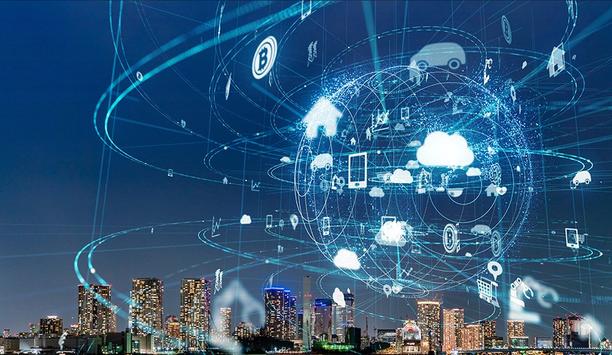
Guide For HAAS: New Choice Of SMB Security System
Download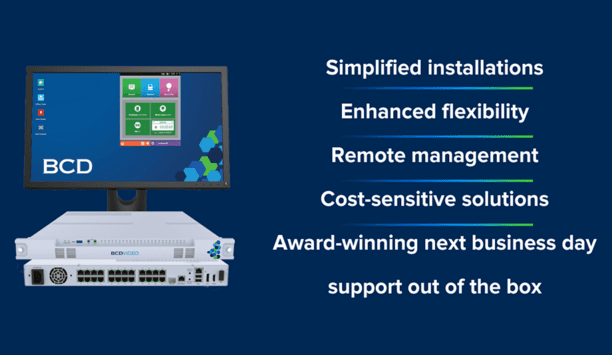
Understanding All-In-One Solutions
Download
Improving City Mobility Using Connected Video Technology
Download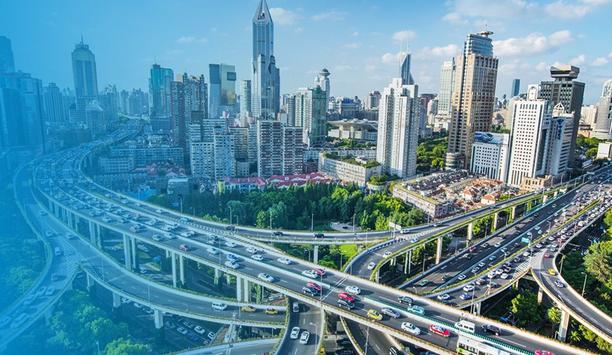
Video Technology: Making Cities Safer & Improving Lives
Download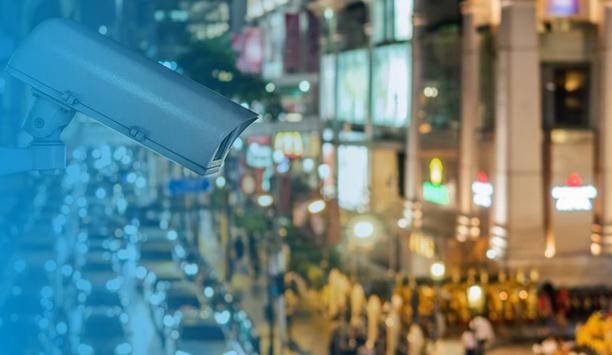
Charting The Path To Safe Cities
Download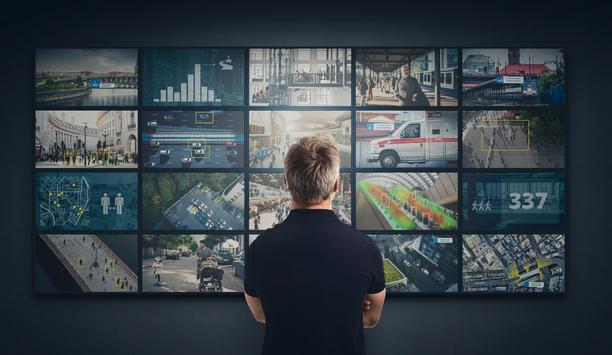
Connected Video Technology for Safe Cities
Download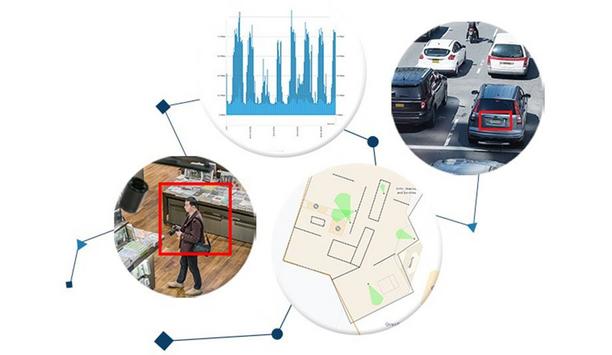
Cloud Video and Smart Cities
DownloadSinaloa, Mexico: Connected Cities are Safer Cities
Download

